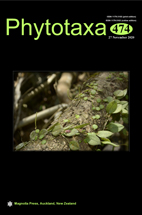Abstract
Most recent studies support a broad circumscription of the Neotropical genus Myrcia De Candolle (1827: 401), now including species previously recognised in Calyptranthes Swartz (1788: 79) and Marlierea Cambessèdes (1833: 373) based on molecular and morphological evidence (e.g. Lucas et al. 2011, 2018, Lourenço 2015, Staggemeier et al. 2015, Wilson et al. 2016, Santos et al. 2017, Amorim et al. 2019). The majority of the consequent nomenclatural changes were made (e.g. Lucas et al. 2016, Lourenço et al. 2018, Campbell et al. 2019), but as an unfortunate consequence of large-scale taxonomic manoeuvering, some replacement names have been found superfluous according to the International Code of Nomenclature for algae, fungi, and plants (Turland et al. 2018). The Code stipulates that the correct name of a species must be composed of the currently accepted genus and the epithet of the earliest legitimate name published for the taxon. When the combination that would result from a direct transfer is not available (i.e., it has already been published before), then the next earliest legitimate epithet applied to the species, from any of the genera implicated, should be used instead (Art. 14.1). Under this rule, a new name must be published for a species only when none of the epithets of its legitimate names are available for a combination in the accepted genus. Necessary corrections have already been made by Lima et al. (2020) and Lourenço et al. (2020), and two further adjustments are here proposed for names published by Lucas et al. (2016). Unless specified, digital images of all specimens cited below were viewed for this work.

